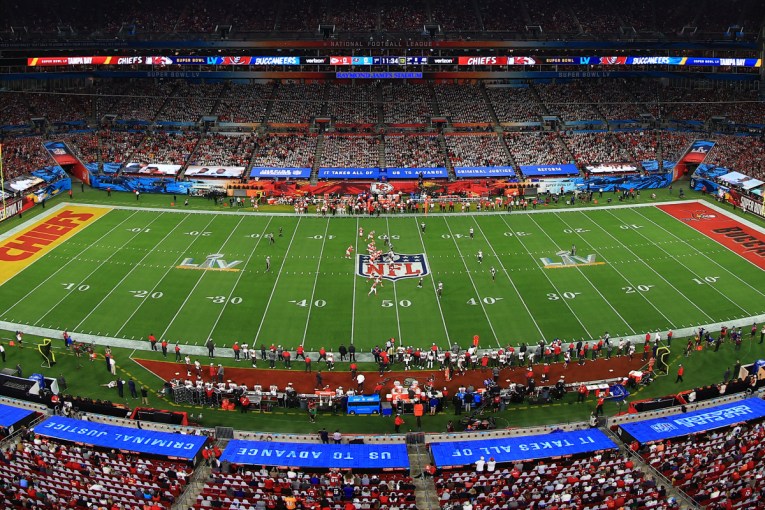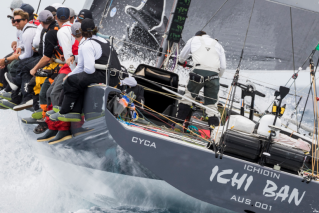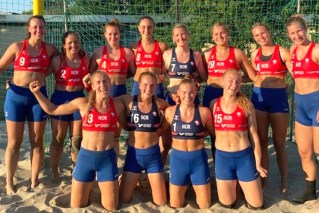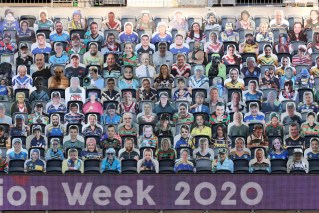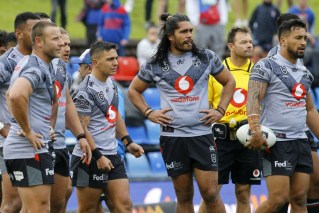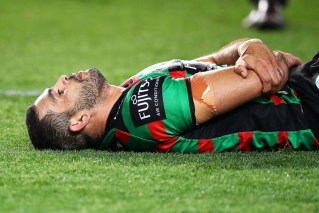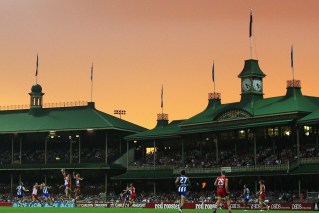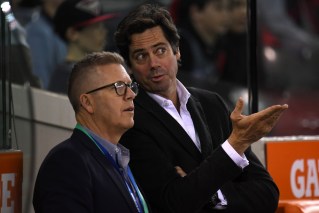Villa, oil money and the new world order

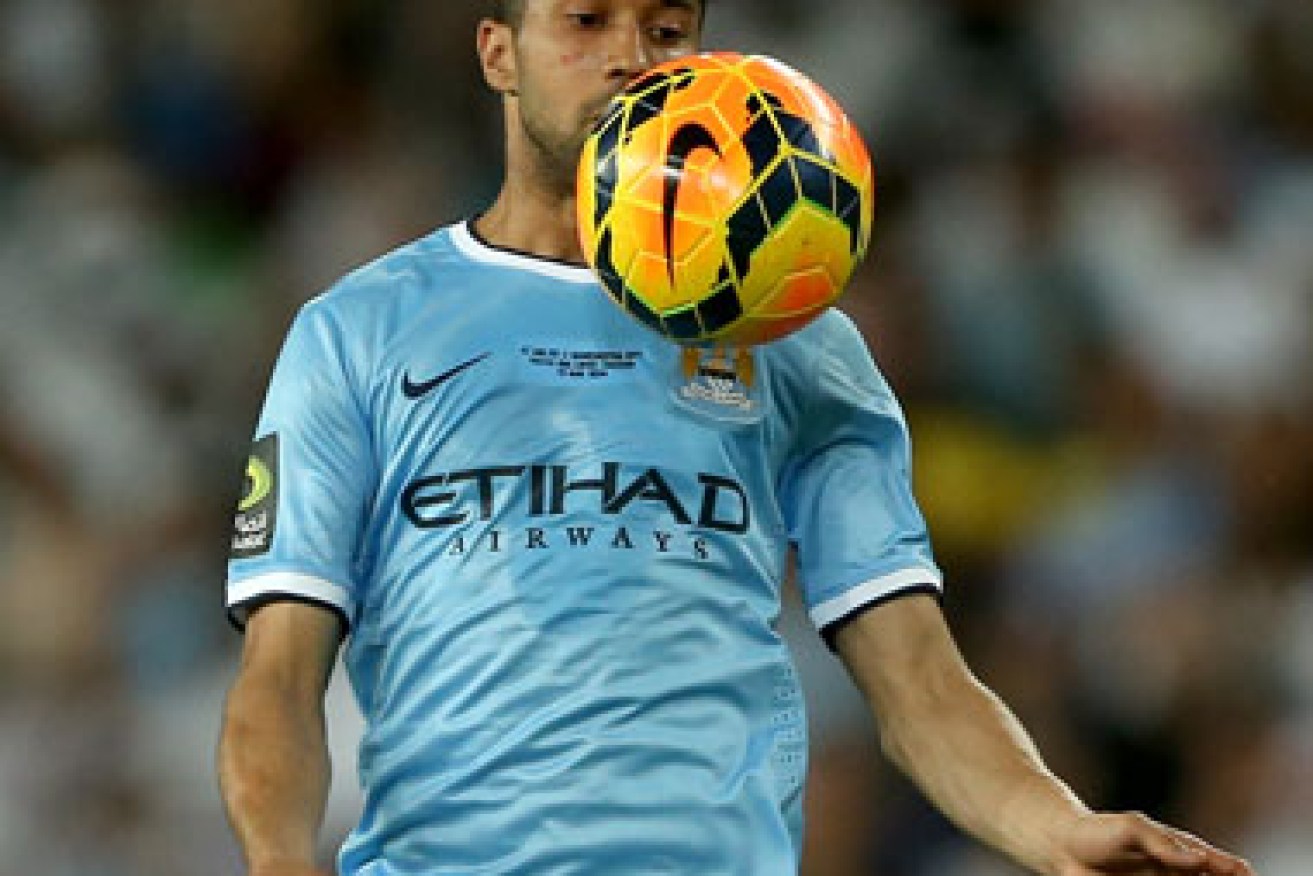
Gael Clichy of Manchester City is an Etihad man. Photo: Getty
The local football scene has changed with the signing of Spanish striker David Villa by the old Melbourne Heart.
You may remember Heart. Last year it was the A-League cellar-dweller. Under John Aloisi the franchise couldn’t win a game. Then their luck changed. They sacked Aloisi and brought back the former Ajax player and Dutch international John van ‘t Schip. He managed the club in the early years and took them, briefly, within reach of the 2014 finals.
In January the club, players and supporters won football’s lottery. The Abu Dhabi United Group (ADUG), through its City Football Group (CFG), bought an 80% stake in Heart. The club joined an elite band with EPL heavyweight, Manchester City, and the new MLS franchise New York City FC. They were later joined by Yokohama F-Marinos when CFG purchased a 20% stake in the club last month.
At $A11.25 million, CFG got Heart for a song. At the time the player list market value was just under $6 million. With Villa’s 10-game stint at the now rebranded Melbourne City, the list’s value has jumped markedly.
So too have the club’s fortunes. On the back of Villa’s signing, City has become this country’s most globally recognisable football property.

Manchester City owner Sheikh Mansour bin Zayed Al Nahyan. Photo: Getty
In his Barca days Villa was worth €50 million. A broken leg caused him to miss the 2011-12 season and his market value slipped. But he’s still good enough to be in Spain’s World Cup squad and to line up for Atletico Madrid in its La Liga winning team.
The Sheiks are looking for investments as tidy nest-eggs for when the oil finally runs out.
After the World Cup he’s moving onto GFC’s New York City franchise in a deal worth €11 million – or $AU16.12 million – almost three times the market value of last season’s entire Heart squad.
But the move should be put in perspective. It does herald an upward shift in Melbourne City and the A-League’s fortunes, and will no doubt be used as a bargaining chip in the next broadcast rights negotiations. But Villa is only here for a brief stint. He’s off to the American MLS, the game’s preferred league for over-30s name players.
Already old EPL types like Robbie Keane, Thierry Henry, Tim Cahill and the current US World Cup captain, Clint Dempsey, have chosen to wind down their careers in the US.
A former Fulham and Spurs player, Dempsey’s $US32 million four-year contract with the Seattle Sounders exceeded David Beckham’s five year, $US32 million deal with the LA Galaxy, and shows the serious money that’s available in the MLS.
Beckham obviously thinks so. He’s invested $US25 million in setting up a Miami based franchise and has attracted interest from investors like the Miami Heat’s basketball icon, LeBron James.
The global sports real estate market is on the rise and its being fuelled by Gulf States’ money. The Sheiks are looking for investments as tidy nest-eggs for when the oil finally runs out, and see global sporting brands and events as offering good returns. Abu Dhabi’s Etihad and Dubai’s Emirates airlines are major sponsors of sporting events, stadia and clubs throughout Australia, Asia and Europe; while PSG and Manchester City have become global football powers on the back of Gulf money.

Gael Clichy of Manchester City is an Etihad man. Photo: Getty
But there’s another side to these investments. In the US and Australian football markets the investments are being used to help dig these European super clubs out of their respective financial holes.
City has sponsorship deals with Ethiad, the Abu Dhabi Tourism Authority, the UAE telco Etisalat and oil investor Aabar. All are owned by the UAE Government.
City and PSG were recently slapped with €60 million and €25 million fines, respectively, for breaching UEFA’s Financial Fair Play (FFP) rules. Under these rules clubs are committed to not break-even, but at least be in the ballpark. Revenues don’t have to match expenditures, but losses do have to be kept within reasonable limits. Expenditures cannot be supplemented by splurges by wealthy owners, such as City’s Sheikh Mansour or PSG’s Nasser Al-Khelaifi and the Qatar Investment Authority.
This was particularly so in City’s case. Fuelled by Mansour’s £1 billion splurge on players and infrastructure development, City has become a serial over-spender. Despite its two EPL titles in the last three years, the club’s splurges in the player transfer market have inflated top-end player salaries and exacerbated an increasingly uncompetitive EPL.
These splurges have placed the club in breach of UEFA’s rules. Between 2011-13, City netted losses of €182 million, placing the club far above the permitted deficit of €45 million. City attempted to balance its budget by claiming as sponsorships revenues from concerns connected to Mansour.
City has sponsorship deals with Ethiad, the Abu Dhabi Tourism Authority, the UAE telco Etisalat and oil investor Aabar. As all are owned by the UAE Government, of which Mansour is deputy Prime Minister, there is an obvious conflict of interest.
As the companies have a vested interest in the club’s success some of their investments have been well above the market value. Etihad Airways’ naming rights deal for City’s revamped stadium was double all other such deals, and so was blocked by UEFA and ruled ‘improper’ by a Council of Europe report in 2012.
This is where the Melbourne City deal and David Villa come in. Under the FFP rules UEFA do not want to restrict clubs developing the game at either community or youth levels. CFG has invested heavily in football academies and development agreements stretching from Aarhus to South Africa.
The question arises of whether CFG’s acquisition of Heart can be viewed in this way and used to offset Manchester City’s debt under the UEFA FFP rules. This could be done through utilising the Melbourne franchise as a developmental arm in GFC’s overall strategy of creating a global football network with Manchester City at its apex.

Lachlan Keeffe prefers to fly Emirates – for now. Photo: Getty
Whatever the outcome, Melbourne City’s recruitment of Villa is a game-changer for the local football market. Though AFL and NRL share the bulk of broadcasting and sponsorship revenues, their capacity for growth is limited by the localised nature of their markets.
No matter how important Collingwood is in the Melbourne market, it doesn’t register on the global footy radar north of Wagga.
The problem for the AFL became evident when Collingwood President Eddie McGuire attempted to increase the club’s Emirates sponsorship deal from $1 to $3.5 million per year in late 2013. Emirates settled on a $10 million deal spread over five years. The airline’s initial reluctance to commit stemmed from the localised nature of the AFL.
No matter how important Collingwood is in the Melbourne market, it doesn’t register on the global footy radar north of Wagga. On signing the agreement last March, the head of the airline’s global marketing and sponsorship, Roger Duthie, said that in the early days Emirates hitched onto Collingwood to create local awareness of the airline’s brand.
“That has been done,” he added, and the airline is “now giving back to the club for the next five years.”
It’s a fair bet that if Emirates is looking for a less localised marketing partnership with an Australian sporting brand in 2019, Melbourne City would offer greater value for money than the Pies.
City not only has the potential to grow within the Australian and Asian markets, but, with the New York and Yokohama deals, it will form part of the CFG brand, ideal for cashed-up sponsors with global reaches such as Emirates and Etihad.
Though only a warm-up for the MLS season, the Villa buy heralds a change in how this country will do footy business. If other players of Villa’s calibre can be lured Downunder, more foreign investors will flood into the market. Soccer will then increasingly challenge cricket’s hold on the summer market and slice into the AFL and NRL’s broadcasting and sponsorship revenues.
Then the FFA’s CEO David Gallup can say with some confidence that “the sleeping giant” of Australian sport is on the move.
Tom Heenan teaches sports studies at Monash University
